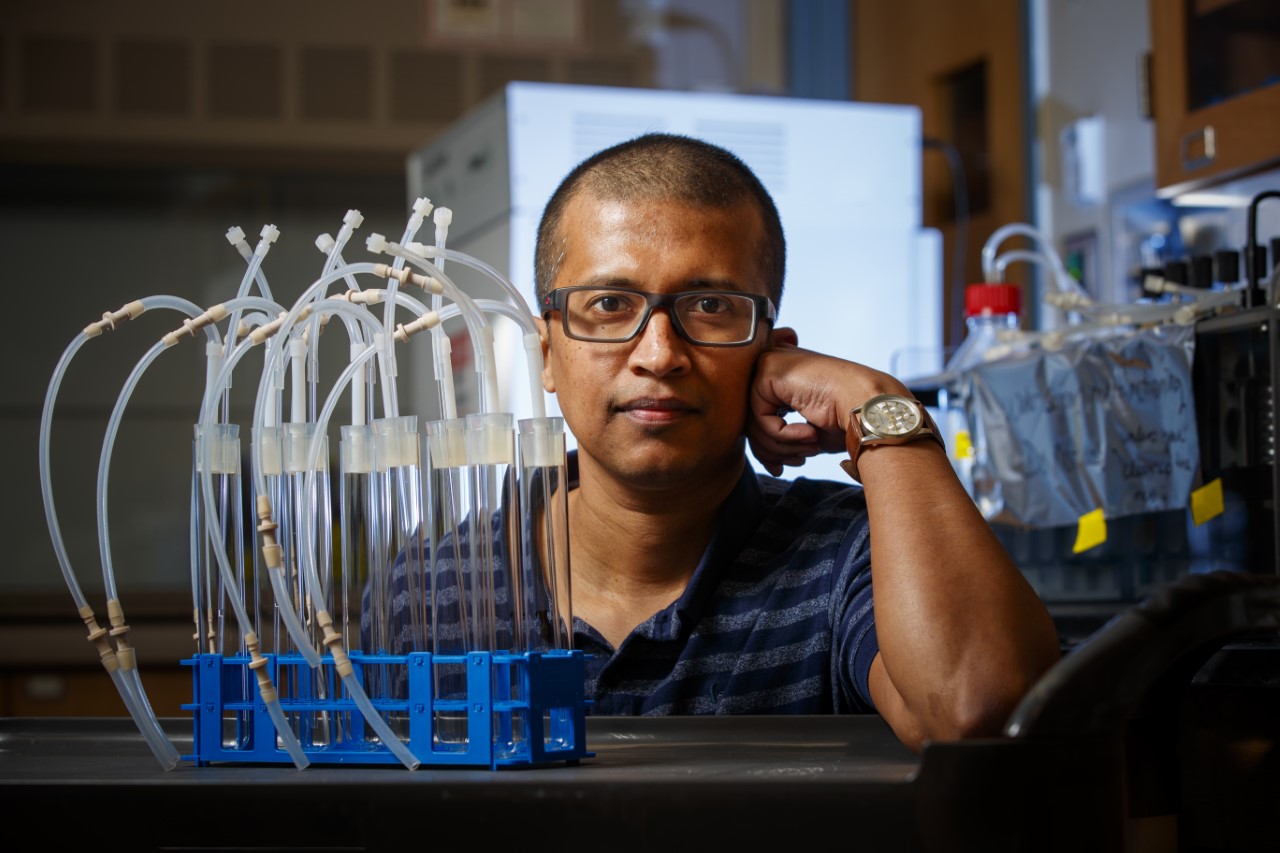
University of Nebraska–Lincoln researchers are studying how an unusually versatile bacterium can be harnessed to more efficiently break down plant waste to help transform it for new uses.
The research has particular significance in Nebraska, where as much as 40% of corn left after harvest is waste material.
“How can we make that waste useable?” said Rajib Saha, assistant professor of chemical and biomolecular engineering, who’s leading the research team seeking to answer that question.
Ethanol production is one way, of course, and Nebraska is a leading producer.
“But we are trying to understand what else you can make out of this,” Saha said.
Saha has received a National Science Foundation CAREER award that provides $747,855 over the next five years.
Although micro-organisms are frequently used to convert the sugars from plant biomass into biofuel and other products, they often are insufficient to break down lignin, an organic polymer in plant cell wells that make them rigid and woody.
Rhodopseudomonas palustris, the subject of Saha’s research, may be a solution. A purple non-sulfur bacterium (PNSB) first sequenced in 2004 and isolated from diverse sources such as marine coastal sediments, swine waste lagoons and earthworm droppings, R. palustris is noted for its ability to switch among four different types of metabolism. It can grow with or without oxygen, or it can use light, inorganic or organic compounds for energy. It can also acquire carbon from either carbon dioxide fixation or green plant-derived compounds. R. palustris is also capable of fixing nitrogen for growth.
That versatility makes R. palustris ideal for breaking down lignin and transforming it into two key substances — polyhydroxybutyrate (PHB) and putrescine. PHB is a bio-based polymer that can be used to create plastics that are biodegradable, making it more sustainable than traditional petroleum-based plastics. Putrescine is an oily compound used to synthesize polymers widely used in the textile industry, especially in conjunction with adipic acid, in the production of a type of nylon.
Saha and his team will use both computational modeling and experimental approaches to better understand how this organism adjusts its metabolism in response to environmental changes.
“At the end of the day, it’s built on something that is a waste in our state and is abundant in our state,” Saha said.
NSF’s prestigious CAREER award supports pre-tenure faculty who exemplify the role of teacher-scholars through outstanding research, excellent education and the integration of education and research.
CAREER awards include an educational and outreach component. Saha plans to develop biology books and interactive lessons for preschoolers — of particular interest to him because he has a 4-year-old son with whom he has been doing experiments for two years.
Other members of Saha’s research team are Cheryl Immethun, U.S. Department of Agriculture postdoctoral fellow; Adil Alsiyabi, third-year doctoral student and Nebraska grad; Mark Kathol, a senior who will join the lab as a doctoral student in June; and Brandi Brown, second-year doctoral student.








